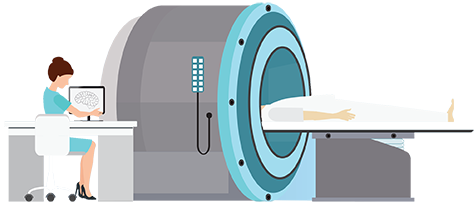

As a nuclear medicine technologist, you will not only seek out diseases, but you’ll also play an integral role in trying to defeat them. From heart disease to cancer, you will be on the front lines in the fight against life-threatening illnesses. Nuclear medicine technologists peer into the cellular function and physiology of a patient, rather than just viewing images of the anatomy.
Radioactive isotopes, known as radionuclides are combined with various pharmaceuticals, which are administered to the patient. The way these substances react will help the physician find problems. As a nuclear medicine tech, you will be using cutting-edge technology, combined with the knowledge you’ve gained through an education degree program about chemical and anatomical interactions.
Browse our nuclear medicine technologist schools offering nuclear medicine, medical laboratory, and special pharmaceutical science programs. You can request information directly from schools in order so you’ll better understand the specifics of each program, including curriculum, course schedules, online course availability, prerequisites, and career options that may be available to you upon graduating from a program.
According to the World Nuclear Association, tens of millions of nuclear medicine procedures are performed in the U.S. — and around the world — every year. Developed in the 1950s, these procedures are now a medical specialty that is practiced in all major countries. And the field continues to evolve: nuclear medicine equipment, procedures, and the development of new radiopharmaceuticals are under constant refinement.Becoming a nuclear medicine technologist begins with completing a certificate, associate, or bachelor’s degree program through an accredited radiology school. Program topics typically covered include nuclear drug administration, equipment operation, as well as general radiology curriculum.
Nuclear medicine certification requirements vary from state to state, so it is important to find out what your state requirements are. Certification is available from two organizations:
The physicians who supervise the procedure and interpret the results are a specially trained and certified. The nuclear medicine technologists who perform the scans and procedures are also specially trained and certified, usually through the NMTCB (The Nuclear Medicine Technology Certification Board). The usual route to becoming a nuclear medicine tech is a two-year associate program.
Nuclear medicine can be used in a variety of ways:
Nuclear medicine is different from an x-ray, a CT scan and ultrasound and MRI. Nuclear medicine can detect the radiation coming from inside a patient’s body. All the other procedures expose the patient to radiation from the outside of the body. No other imaging method has the ability to use our body’s own functions to determine disease status.